
Jewish Ham: Cured Goose/Duck
The tradition of making duck and goose ham of the Sephardim is also to this day identified as typically Jewish in countries such as Italy. In Sefarad, it was common to cure a whole goose or to also just cure the breasts, turning the rest of the meat into a minced mixture that was stuffed into the neck skin and then cured, forming a type of dried sausage. When the cured breasts are sliced, it is easy to realize the resemblance of duck or goose ham to jamón or tocino (salt pork).
Directions
If you cannot find fresh duck or goose or if you are unwilling to debone a bird yourself, you can easily find frozen duck breasts in many supermarkets.
The simplest way to prepare duck or goose ham is to just bury the breasts in kosher salt. It is common to pat cracked pepper on the breasts before tying them together with the fat side out, but you can even skip this step. If you have a smoker, you can smoke the meat after it has dried or, for a more traditional effect, you can hang it by your chimney the next time you light a fire!
If you are using salt that has been out of the package for a while or you live in a damp climate, you can dry the salt before use by stirring it in a cast iron pot on a medium-high fire for five to ten minutes or until it looks dry. Be careful when handling it after you have removed it from the heat because it will be scorching hot.
After the salt has cooled down to room temperature, lay a bed of it in a glass bowl. Lay the meat on the salt and cover it with another layer.
If your bowl is not large enough to hold both breast halves in one layer, you can place one breast half on top of the other, first making sure that you have spread a thick layer of salt between them.
It is important that the meat be covered with salt on all sides and that the layers are thick, as the meat will be releasing its juices as it becomes cured.
Place the bowl with the duck or goose meat in the salt in the refrigerator for a week.
To consume, slice thinly and serve as an appetizer or put a piece in your adafina!
Once you have become comfortable with this recipe, you can try adding some garlic and dry spices like black pepper, bay leaf, thyme, and juniper berries alongside the salt.
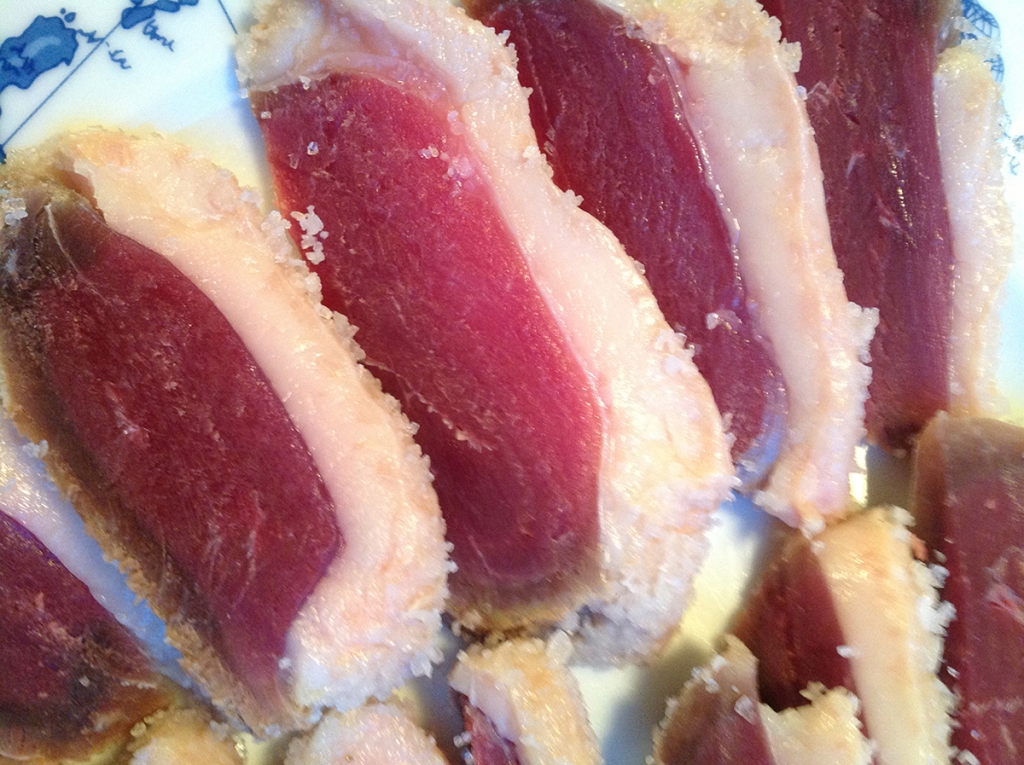 Learn more about this dish by reading the Story Behind the Recipe.
Learn more about this dish by reading the Story Behind the Recipe.
Links for Further Exploration
- Sephardic Studies at the University of Washington – Explore more Sephardic history and culture through articles and digital artifacts at the Stroum Center’s Sephardic Studies Program page.
- JewishStudiesHUB – Explore our innovative blog page with fresh views on Jewish topics by UW faculty and students. You can also access video clips and view new media projects.
© Ana Gomez-Bravo, 2014
The Converso Cookbook
Ingredients
2 duck or goose breast halves
1 pound kosher salt
black pepper (optional)
bay leaves (optional)
thyme (optional)
juniper berries (optional)
Further reading:
David M. Gitlitz and Linda Davidson. A Drizzle of Honey: The Lives and Recipes of Spain’s Secret Jews. New York: St. Martin’s Press, 1999.
Santa María, Ramón. “Ritos y costumbres de los hebreos españoles.” Boletín de la Real Academia de la Historia 22 (1893): 181-188.
Sephardic Studies
Explore Sephardic history and culture more at the Stroum Center’s Sephardic Studies Program page.

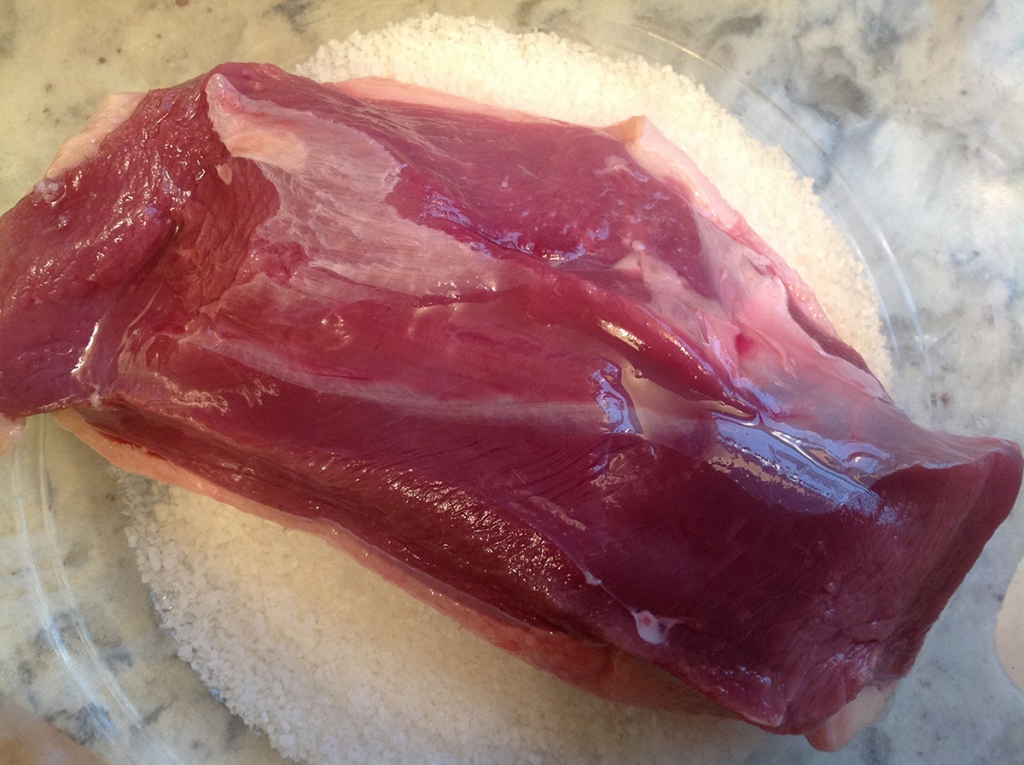

The Story Behind the Recipe
Learn more about the history behind this dish.


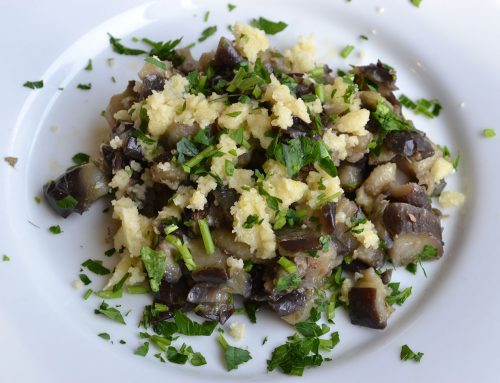

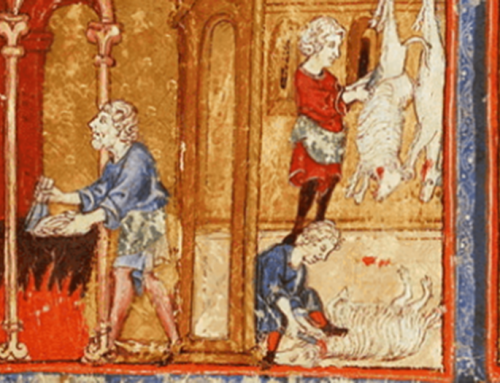

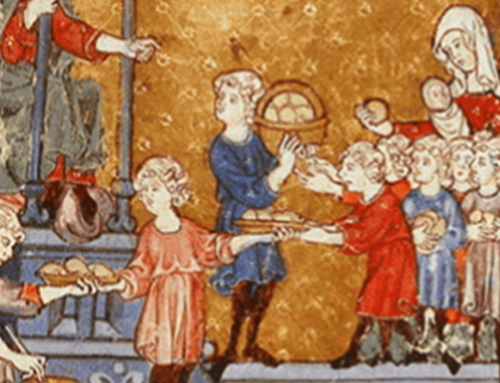
I just discovered your website and am very excited to find such interesting recipes and information. Thanks for your amazing scholarly research!
What is the significance of the can of tomatoes?
the can merely is a weight on the lid to keep it closed tightly.
I like your recipe but I am wondering, in order to get this red color you have on the picture don’t you use saltpetre?
I just want to say a big “DITTO” to Lonna Kahn!
[…] https://jewishstudies.washington.edu/converso-cookbook/jewish-ham-cured-duck-goose/ […]
Que eu eu saiba a carne de pato é pesada.
O pato não é um animal imundo?
Os portugueses da minha família gostam de comer cabra.
O lado brasileiro da minha família carne seca e ovos